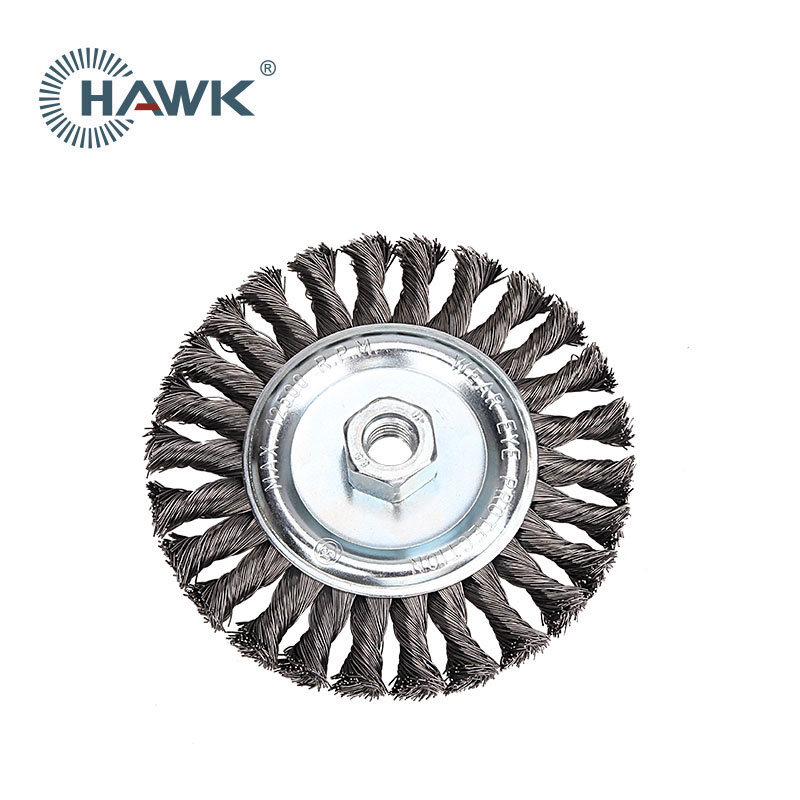Power brushes of the knotted wheel wire variety are frequently employed for demanding cleaning and surface preparation tasks. The Knotted Wheel Wire Brush head is comprised of tightly twisted and knotted wire filaments arranged in a circle to form the brush.
The steel or stainless steel bristles used to make the Knotted Wheel Wire Brush are typically strong and long-lasting. It has a threaded arbor for simple attachment and is made to fit onto rotary tools like an angle grinder or a drill.
This kind of brush is intended for tasks that call for a lot of aggression, such removing thick layers of paint, rust, or corrosion from metal surfaces. Prior to welding, soldering, or painting, it is useful for cleaning and prepping surfaces.
To accommodate varied applications and surfaces, the knotted wheel wire brush is offered in a variety of sizes and configurations, including flat and cup-shaped forms. To avoid harming the surface being cleaned or prepped, it is crucial to pick the right brush for the job.
In conclusion, the Knotted Wheel Wire Brush is a strong and efficient tool for heavy-duty surface cleaning and preparation activities in a variety of fields, including metalworking, construction, and automotive.
Although the production procedure for knotted wheel wire brushes may differ based on the particular design and manufacturer, the following phases are usually involved:
Wire Preparation: To obtain the desired diameter and shape, steel or stainless steel wires used for brushes are commonly drawn through dies.
Twisting and Knotting: To round the main arbor, the wire filaments are first twisted, then knotted. To acquire the necessary density and shape of the brush head, this is frequently carried out by a machine using specialist equipment.
To ensure that the wire filaments are firmly secured to the center wire, welding is used to join them.
Trimming: To create the correct brush profile, the brush head is cut to the necessary length and form.
Finishing: The brush head is often heat-treated to make the wire filaments more durable and robust. Additionally, any burrs or sharp edges that can harm or hurt the surfaces being cleaned are removed during this operation.
Assembly: To make the brush head compatible with a rotary instrument, such as an angle grinder or drill, the brush head is next attached onto a threaded arbor or shaft.
Testing: Each brush is examined for quality to make sure it complies with the necessary requirements, including the bristle density, wire diameter, and overall dimensions.
Overall, to guarantee that the finished product meets the requirements for durability, efficacy, and safety in various cleaning and preparation applications, the production process for knotted wheel wire brushes calls for high precision and quality control.


